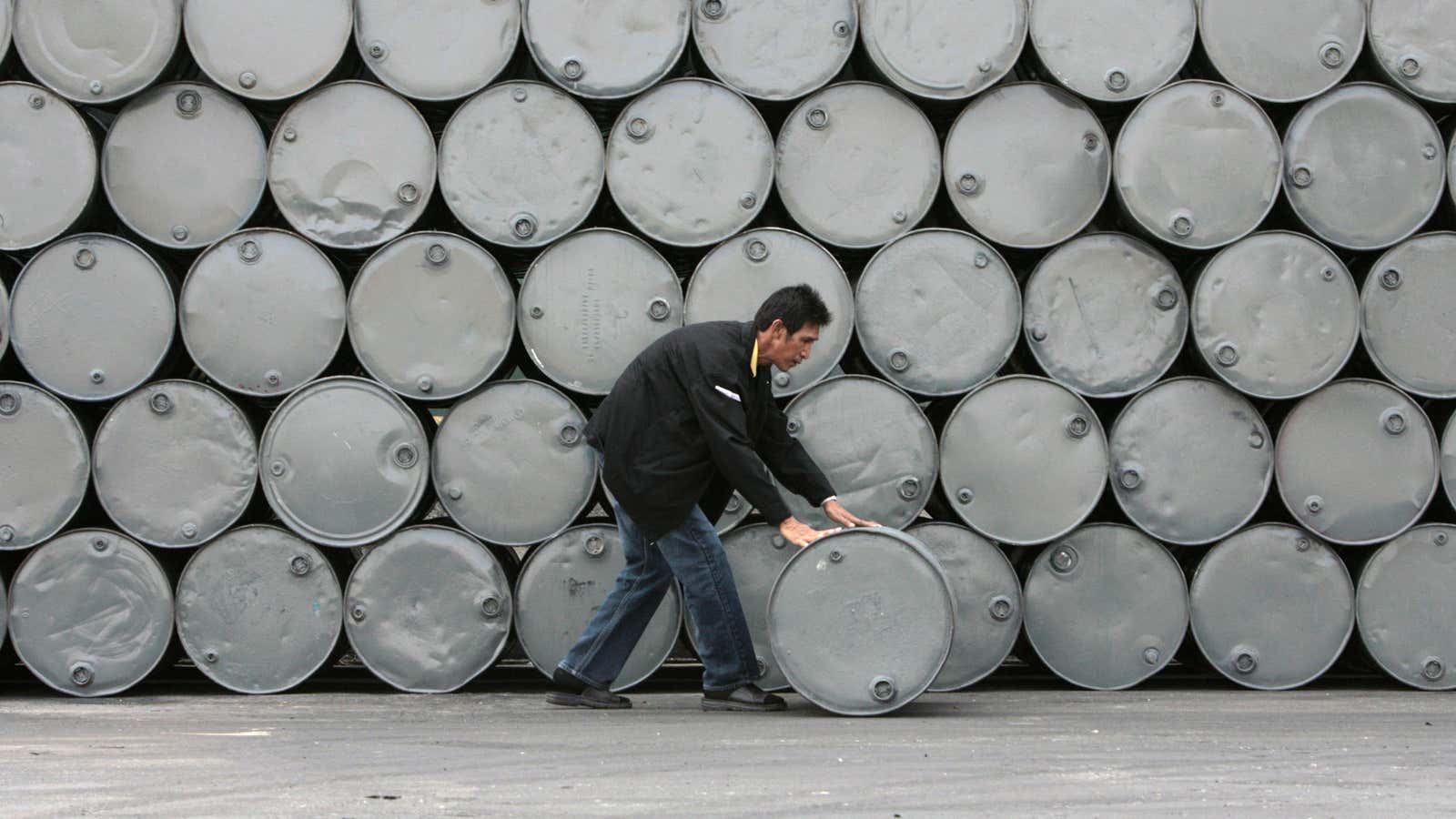Russia’s invasion of Ukraine set off a rise in vegetable oil prices around the world. Indonesia is set to deal another blow to global food inflation.
On Friday (April 22), Indonesian president Joko Widodo announced an export ban on palm oil, the most widely used edible oil in the world. Indonesia exports 30 million tons of vegetable oil a year, more than any other country, but tightening global supplies raised prices at home, leaving many Indonesians struggling to find and afford cooking oil.
The export ban will take effect on April 28, and continue until the government deems the domestic supply to be “abundant and affordable,” Widodo said.
In Indonesia, palm oil is used for cooking. In the US and elsewhere, palm oil shows up in a wide range of packaged foods, from frozen pizza dough, chips, cakes, cookies, and pet food, as well as cosmetics like lipsticks and shampoo. The ban appears to apply to a more processed form of palm oil often used in these types of products.
Countries like India, the world’s largest importer of edible oils, are bracing for a price shock, but so far palm oil prices are holding relatively steady following the announcement. Soybean oil, a substitute for palm oil, hit a record high on Friday.
In an interview with Reuters, Indonesia’s finance minister, Sri Mulyani Indrawati, acknowledged that the export ban would be difficult for other countries. She compared the move to limits on exports of masks and surgical gloves during the pandemic. “We know this is not good in the medium and long term,” Indrawati said, “but in the short term, you cannot stand in front of your people when you have the commodity which is needed by your people and you let [supplies] just go out.”
The week of the announcement, Indonesia’s Attorney General’s Office accused an official at the trade ministry of corruption for issuing export permits to palm oil producers, and arrested several high-ranking officials in three of the country’s largest palm oil companies, according to the Jakarta Post.
Cooking oil chaos around the world
Ukraine produces most of the world’s sunflower seed oil, but with its supply cut off from export after Russia invaded in February, food producers started turning to palm oil. The war, combined with weather disruptions that limited harvests in other vegetable oil-producing regions, sent all cooking oil prices up, including palm oil. Ukraine exported 5.4 million tons of edible oils, a sixth of the volume of Indonesia’s exports.
Sunflower oil prices went up 73% to $2,844 per metric ton between between September 2021 and March 2022, according to the US Department of Agriculture. Soybean oil prices increased 43% in the same period, according to Markets Insider.
For Indian families, this meant dipping into their savings to make up for increased prices in cooking oil, reducing consumption, or cutting costs on other purchases. In China, rising prices sparked nationalist sentiments. “A bottle of oil should contain as much Chinese oil as possible,” the Chinese agriculture minister said in February. In the UK, grocery stores set limits on how many bottles of oil a person can buy. In Indonesia, police fired tear gas at students protesting cooking oil prices.
Cycles of rising prices and export bans have been building since the start of the war in Ukraine. According to the World Bank, the number of countries that have put food export bans in place have surged, to over 35 by the end of March.
Last week, World Bank president David Malpass noted that global food prices jumped as much as 37% year-on-year in March, which could be catastrophic for the world’s poorest.
